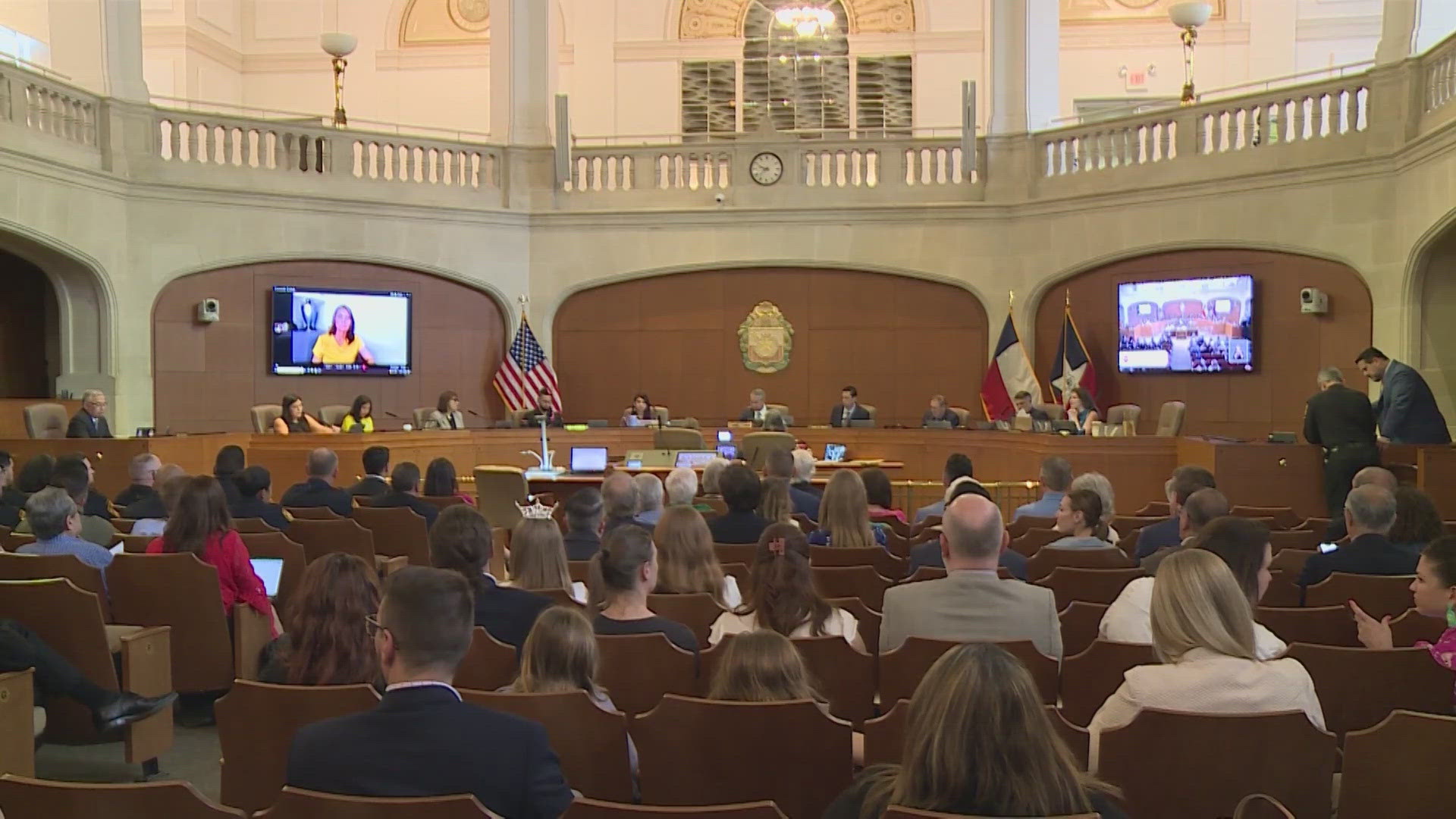SAN ANTONIO — Frustrations are rising among those that live on San Antonio's south side over a new zoning proposal.
The Industrial Compatibility Overlay District (ICOD), if passed, would be the first of its kind for the city. Its ultimate goal is to limit residential growth within a two-mile radius around the Toyota plant located on Applewhite Road.
For some who live in that radius, the proposal is restrictive.
"That's one thing I would never agree on. I mean, having someone else have control or hearsay of what you can and can't have on your property," said Nicole Medrano, who lives in the proposed radius. "Unless you want to pay my taxes every year, I'm the one that's paying my bills on my property taxes, and my CPS bill and water bill."
The proposal divides the two-mile radius into zones A and B. Zone A covers the first mile around the Toyota plant and "generally limits new residential and commercial uses," according to the city's website. Zone B stretches out one mile from Zone A's boundaries and "generally limits residential and residence-based uses."
"We want to protect potential future residents who may be looking in that area and want to ensure that folks understand that additional residential density adjacent to a heavy industrial use is not really a good practice," said Rudy Nino Jr., assistant director of San Antonio's Planning Department.
Nino Jr. believes ICOD to be similar to the existing Airport Hazard Overlay District, the Military Lighting Overlay District and the Military Attenuation Overlay District, all three of which have restrictions to protect airport and military operations.
"The Toyota manufacturing plant has a heavy industrial use (zone), but around that there's a lot of light industrial (zones) and we're starting to see some of that develop as an industrial use," he said. "So we want to ensure that there aren't any future land use conflict."
ICOD does not apply to residents outside of city limits. Some of the homes within the two-mile radius are generational, and were in Bexar County boundaries before being annexed within the city.
"Many of those houses currently are considered nonconforming uses," Nino Jr said. "They are grandfathered because they were there prior to zoning having been established. But many of these properties are zoned industrial; they're allowed to continue to remain out there. If anything, they're allowed to actually have that residence and, for future use, should they decide to sell, can sell it as either that for their residents or for industrial use."
For one resident, who wanted to remain anonymous, that's part of the frustration.
"We lived in the county and some of us were here and before the city and before Toyota," he said. "We're pretty much grandfathered in. But according to all these restrictions, it affects everybody."
There are exceptions. Existing homes can be repaired and enlarged if the number of homes doesn't increase, and the lot is not subdivided. Undeveloped platted lots with residential zoning can be developed for residential purposes, only if the lot is not subdivided for additional residences.
Further, undeveloped unplatted property with residential zoning can be platted and developed for single-family residential use, as long as it complies with the development standards of the existing zoning and amounts to only one dwelling per acre.
"I feel that it (the zoning proposal) was very unfair and there is a lot of liability with this rezoning," the resident said. "And we definitely are going to band together and seek counsel."
The two-mile proposed buffer to some residents sounds similar to the "Starbright Agreement" established in 2003 between a coalition comprised of San Antonio, Bexar County and Texas with Toyota. The Starbright Agreement is essentially an ordinance, part of which refers to zoning revisions in the three-mile perimeter outside of the Toyota plant and the creation of an "appropriate new zoning district." The agreement states the city would have to impose appropriate land use guidelines that would satisfy Toyota regarding use, density and other restrictions.
Nino denies the Starbright Agreement having anything to do with ICOD, explaining instead that ICOD came from the Texas A&M - San Antonio Regional Center Plan that was developed in 2019.
"The Starbright Agreement was an economic development center deal that was not just signed by the city of San Antonio, but it was signed by Bear County all the way to the governor's office. That was an economic development incentive deal hat does not require the city to do anything specifically related to land use zoning," he said. "It references applying good land use principles around that location, protect the Toyota manufacturing plant so that everybody can assure together that there are health and safety considerations being addressed when it comes to land uses around having industrial use, which is what we do. Our recommendations are strictly based on appropriate land use, planning principles, public health and safety."
The ICOD proposal was first presented to the city's Zoning Commission, which on May 21 decided to withhold making a recommendation until July 16 at 6 p.m. The ultimate decision will be up to City Council, but there is no set date for when the proposal will be heard at this time.
>TRENDING ON KENS 5 YOUTUBE:

